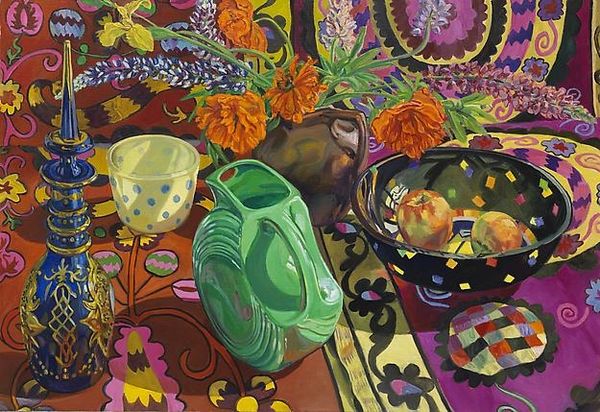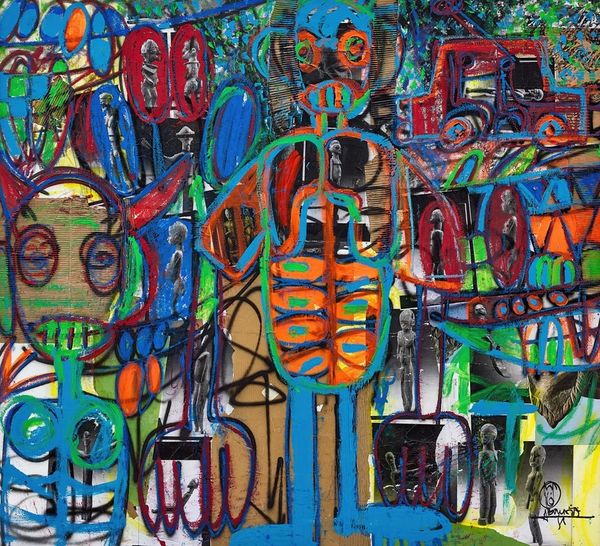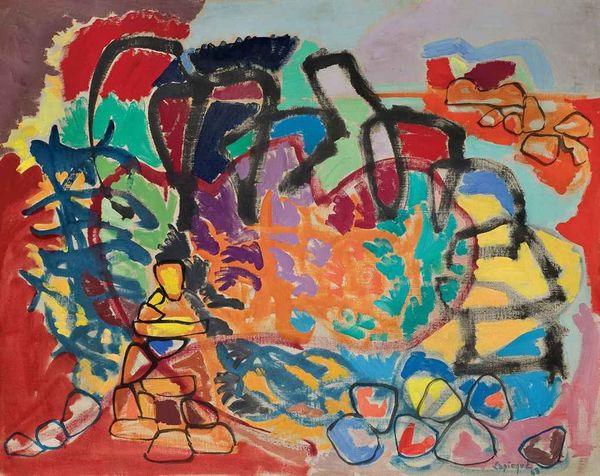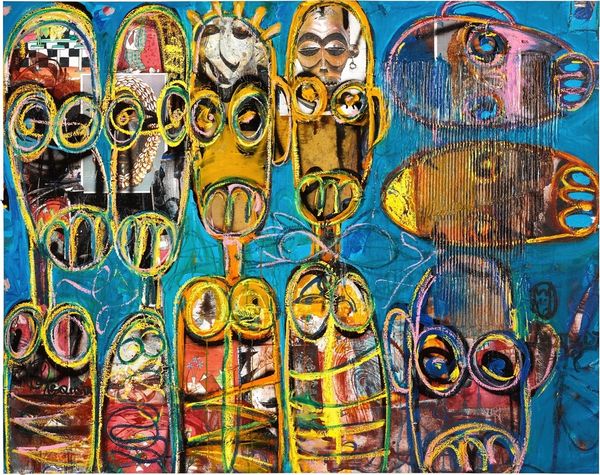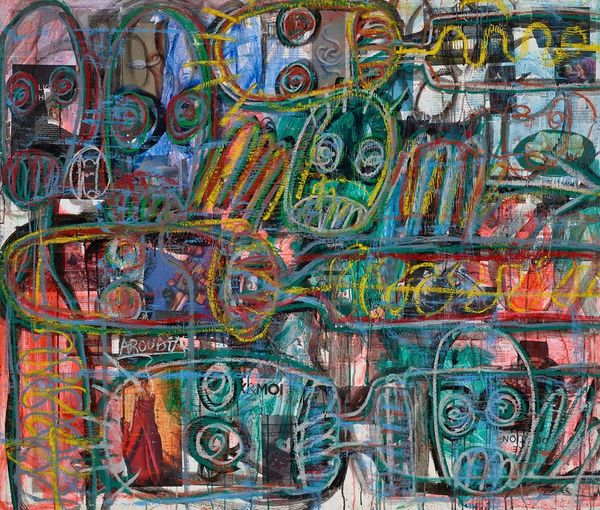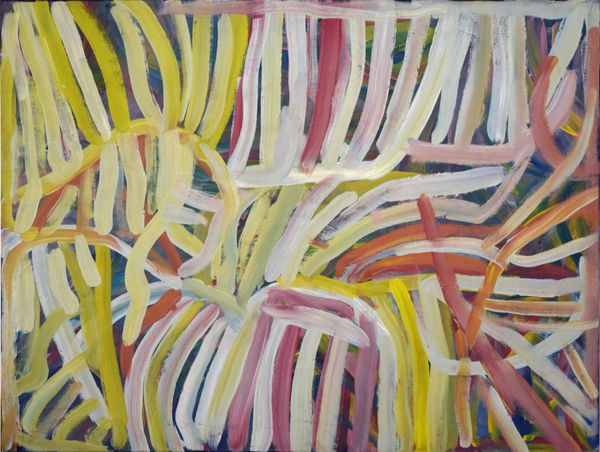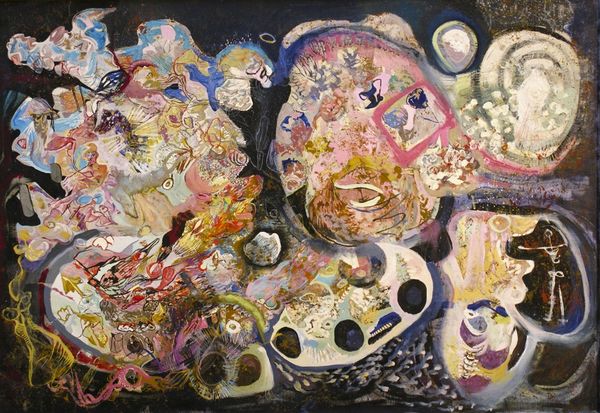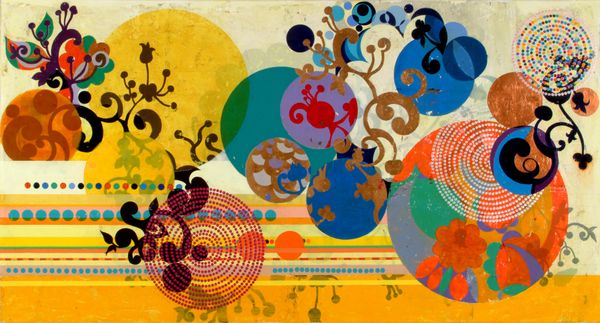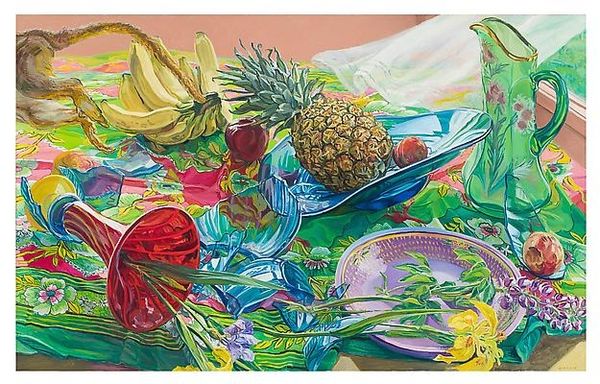
painting, acrylic-paint
#
abstract-expressionism
#
abstract expressionism
#
abstract painting
#
non-objective-art
#
painting
#
pattern
#
acrylic-paint
#
acrylic on canvas
#
geometric
#
abstraction
#
modernism
Copyright: Simon Hantai,Fair Use
Curator: Simon Hantai's "Peinture," created in 1952, immediately strikes me with its density. What’s your initial take? Editor: The shapes! I see a field of deconstructed machinery – almost as if viewing an exploded diagram, suspended between biomorphic forms and industrial design. Curator: Exactly. Hantai was working through the legacies of both Surrealism and the emerging Abstract Expressionist movement in this period. Note the material qualities, though. Look closely at the paint handling— particularly at how Hantai layers acrylic, creating depth through color and texture. This departs from earlier surrealist engagements by focusing on the material presence of the artwork itself. Editor: I’m interested in what seems to be implied by the title – simply "Peinture" - or "Painting". Is that an insistence that the canvas is purely about formal, aesthetic concerns and nothing more, in a period rife with artistic experimentation post World War II? There’s a certain rebelliousness I detect within the choice to present abstraction during times of social change. What about that connection? Curator: Absolutely. While Hantai engaged with automatism, you also see a deliberate build-up here, an almost architectural construction. The work demands an acknowledgment of the physical process and, as a result, resists total dematerialization so present in more academic iterations of AbEx. We must appreciate Hantai’s craft. Editor: It also pulls questions of authorship and intentionality to the foreground. How much of the "automatic" act is consciously shaped? We're clearly dealing with post-war philosophical angst surrounding the human condition, specifically considering what constitutes our control, if anything. This canvas almost visualizes such debates in my view. Curator: Right, and perhaps even presciently questioning them, knowing Hantai's move towards techniques which remove his hand more directly through the "pliage." Thinking of “Peinture,” I see how he pushes painting, investigating new possibilities afforded by materials, but firmly aware of art history itself. Editor: Absolutely, and through that lens of process and intentionality, the very act of looking, engaging, is activated beyond merely regarding aesthetics. It encourages the viewers involvement. It invites critical assessment about how creative work comes into being. Curator: Hantai creates not merely an abstraction, but opens into active discourse centered on material construction. Editor: A potent contribution indeed—expanding formal conventions with wider, meaningful reflections on creative agency.
Comments
No comments
Be the first to comment and join the conversation on the ultimate creative platform.
